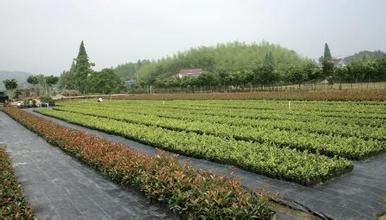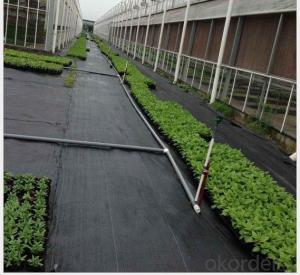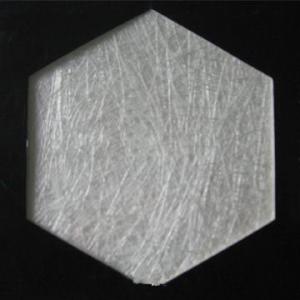Geotextile Polypropylene Fabric Silt Fence, Weed Barrier Fabric, and Polypropylene Fabric
- Loading Port:
- China main port
- Payment Terms:
- TT or LC
- Min Order Qty:
- 5000 roll
- Supply Capability:
- 100000 roll/month
OKorder Service Pledge
OKorder Financial Service
You Might Also Like
1. Polypropylene Fabric Introduction
Polypropylene fabric is made of environmentally friendly raw materials, pp spunbond nonwoven fabric.
It used to prevent the growth of weed, without the use of potentially dangerous chemical sprays or labor intensive hoeing.
Once installed, weed mat will continue providing protection for years without maintenance.




2. Polypropylene Fabric Feature:
1. Weed suppressant and drainage control landscaping fabric
2. Spun bonded non-woven fabric – will not fray when cut
3. Easy to use
4. Environmentally friendly
5. Allows water, air and nutrients through, suppressing weeds without the use of chemicals
6. Good alternative to Plantex® where cost is a factor
7. UV Stabilised
8. Reduces the level of watering required due to the slower rate of water evaporation
3. Polypropylene Fabric Function:
1. Cover crops in the ground surface,prevent weeds and against the insect
2. Controlling soil humidity and the temperature
3. Does not affect the growth of the crops
4. Protects plants from harmfully solar radiation
5. Air permeability, water permeability help crops growth.
6. Mothproof, eco-friendly, breathable, anti-bacteria, tear-resistant, fusible
4. Polypropylene Fabric Applications:
1. Weed block for landscaped garden beds
2. Permeable liners for planters (stops soil erosion)
3. Weed control under wooden decking
4. Geotextile for separating aggregate / soils under walkway blocks or bricks
5. Assists in preventing paving from settling unevenly
6. Landscape fabric prevents soil erosion
5. FAQ:
Q1: What is your minimum order quantity?
A:The minimum order quantity is 5000 ,but it is negotiable.
Q2:What is your payment terms?
A: T/T,Western Union,Paypal,L/C...
Q3:What is your delivery time?
A:Production time usually costs 2-20 days.
Waiting to cooperate with you!
- Q: How do geotextiles improve the performance of drainage systems?
- Geotextiles enhance the performance of drainage systems by preventing soil particles from clogging the system, while still allowing water to flow through. This improves the overall functionality and longevity of the drainage system by reducing the risk of blockages and increasing the efficiency of water drainage.
- Q: How do geotextiles help with soil stabilization in steep slopes?
- Geotextiles help with soil stabilization in steep slopes by providing reinforcement and preventing erosion. When placed on the slope, geotextiles act as a barrier, holding the soil in place and preventing it from sliding or eroding downhill. The geotextiles also allow water to pass through while retaining the soil, reducing the impact of heavy rainfall or water flow on the slope. This helps to maintain the integrity of the slope, preventing landslides and ensuring long-term stability.
- Q: Roof garden pool at the bottom with pebbles, pebbles above with geotextile, geotextile above the soil
- Geotextile laying on the soil can be, goose soft stone has replaced the effectiveness of the drainage board. Geotextile play a filtering effect, the excess water through the cloth, go through goose soft stone flow. Soil is geotextile interception, will not be lost, plug the drain, Huazhi geotextile material manufacturers.
- Q: How do geotextiles help in preventing soil liquefaction?
- Geotextiles help in preventing soil liquefaction by providing stability and reinforcement to the soil. They act as a barrier and restrict the movement of soil particles, thereby reducing the potential for liquefaction. Additionally, geotextiles enhance the drainage capacity of the soil, allowing water to flow through and preventing the buildup of excess pore pressure, which is a major factor leading to liquefaction.
- Q: Fish pond geotextile use method
- Not geotextile to use impermeable geotextile is a filtering effect
- Q: Bought a roll of geotextiles soon run out, do not know if there is nothing to replace the geotextile material more
- I use the plastic cap, but unfortunately has been buried in the basin, or else, then open up the chart, the cap around the cut a few gap, the statement is only suitable for the bottom of only a hole in the pot, its role and tile the same , But better than the tile effect, a lot of holes that kind of plastic flower pots I generally do not pad things, feeling will not drain a lot of soil and nutrients.
- Q: How do geotextiles help with soil stabilization?
- Geotextiles help with soil stabilization by acting as a barrier between the soil and other materials, such as water or aggregates. They prevent soil erosion, promote drainage, and enhance soil strength, ultimately improving stability and preventing the loss of soil particles.
- Q: Can geotextiles be used in the construction of agricultural ponds?
- Yes, geotextiles can be used in the construction of agricultural ponds. Geotextiles can be employed as a barrier or liner in the pond to prevent seepage, erosion, and contamination. They help in stabilizing the soil and provide reinforcement, ensuring the longevity and durability of the agricultural pond.
- Q: Geotextile drainage network and geotextile how to heat stick
- Geotextile and geotextile crimp part of the use of sewing or hot air welding. Hot air welding is the connection method of filament geotextile, that is, with the hot air gun on the connection of two pieces of cloth instantaneous high temperature heating, so that part of the molten state, and immediately use a certain external force to make it firmly together. In the case of wet (rain and snow) weather can not be hot adhesive connection, geotextile should take another method of a suture connection method, that is, with a dedicated sewing machine for two-wire suture connection, and the use of anti-chemical UV suture.
- Q: Welding geotextile how to apply the mattress on or below
- Geotextile does not need welding, geotextile is geotextile, the product itself exists gaps and pores, in the project mainly play a filter, filter, reinforcement, the role of protection, can not achieve the role of anti-seepage. Generally only need to suture on it. Composite geotextile need to be welded, composite geotextile, also known as composite geomembrane, by the geomembrane through a series of production processes, the upper and lower sides were combined on the geotextile production. In the production process in each roll of composite geotextile of the four sides will be set aside 10-20cm width of the welding edge. Welding construction only need to weld the edge of the geomembrane welding, welding edge of the geotextile suture can be. Geomembrane need to be welded, geomembrane is divided into smooth geomembrane and rough geomembrane (matte geomembrane), smooth geomembrane without the need for direct laying of welding on it. Rough surface geomembrane is generally covered with wool up, welding need to remove the surface and then welding.
Send your message to us
Geotextile Polypropylene Fabric Silt Fence, Weed Barrier Fabric, and Polypropylene Fabric
- Loading Port:
- China main port
- Payment Terms:
- TT or LC
- Min Order Qty:
- 5000 roll
- Supply Capability:
- 100000 roll/month
OKorder Service Pledge
OKorder Financial Service
Similar products
Hot products
Hot Searches
Related keywords


































